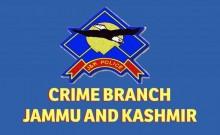
Defence analysts were perplexed at the non-inclusion of the defence outlay during the annual Union Budget 2016 presentation by Finance Minister Arun Jaitley Feb. 29. Now, the Cabinet Committee on Security (CCS), the highest executive body that takes a call on defence matters, has cleared the acquisition of two Airborne Warning and Control System (AWACS) platforms, costing Rs 7,500 crore, IANS reports.
The report says this purchase will be made under a tripartite contract between Russia, Israel and India, and these two platforms are likely to be follow-on orders. India already has three Phalcon AWACS, inducted in 2009 to 2010. The platform includes an Israeli 360-degree Phalcon early-warning radar and communication suite mounted on Russian IL-76 A-50 heavy-lift military aircraft.
The AWACS platform plays significant role in Indian Air Force's Network-Centric Operations. These aircraft have electronic intelligence (ELINT) and communications intelligence (COMINT)-gathering capabilities that help intercept signals from enemy areas, in monitoring troop build-up and to detect aerial threats. It can detect drones and cruise missiles from a range of 400km.
India is ramping up its Airborne Warning and Control Systems (AWACS) platforms in a big way even as the armed forces are moving towards network-centric operation in preparation for the future.
The imported AWACS platforms will be complemented by two indigenous AWACS systems being developed by the Defence Research and Development Organisation (DRDO). The defence minister-headed Defence Acquisition Council (DAC) had cleared this proposal in March 2015, reports the Hindu.
The DAC had allocated Rs 5,113 crore for two systems likely to be based on the Airbus A-330 aircraft.
Apart from this, defence research establishments are also working on two smaller indigenous Airborne Early Warning and Control (AEW&C) programmes based on the Embraer ERJ 145 aircraft.
The CCS has also cleared a proposal for the induction of the fourth regiment of Brahmos missile and two more of Pinaka rocket-launchers for the Army.














